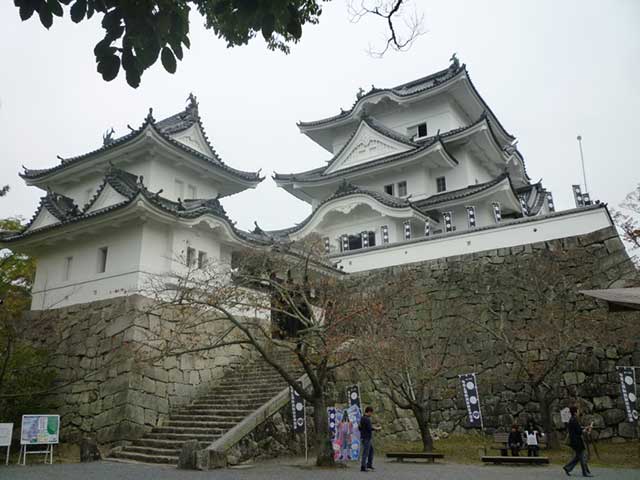
Many tourists flock to Iga Ueno in search of ninja experiences, often overlooking the city's centerpiece: Iga Ueno Castle, a prime example of Warring States period fortresses. Surprisingly, the Ninja Museum and Iga Ueno Castle share the same grounds, nestled within modern-day Ueno Park!
Construction of Iga Ueno Castle began in 1585 under Takigawa Katsutoshi's command, though he was soon stripped of his lands. The inner citadel, Honmaru, and keep were predominantly completed by the new lord appointed by Toyotomi Hideyoshi, Tsutsui Sadatsugu, who took over in 1586.
In 1608, Tsutsui faced allegations of misrule, leading to his clan's dissolution by the Tokugawa Shogunate. Todo Takatora, renowned for his castle architectural prowess, assumed control. Takatora revamped the Honmaru and heightened the stone ramparts to an impressive 30 meters, earning the castle the moniker "White Phoenix" due to its resemblance to the mythical bird resting in the greenery below.
Sadly, a typhoon ravaged the main tower in 1612, and due to stringent Tokugawa laws and Ieyasu's political motives, it remained unreconstructed until 1935. The wooden five-story keep, reconstructed then, stands as a testament to Momoyama Period architecture and even featured in Akira Kurosawa's 1980 film "Kagemusha."
Today, Iga Ueno Castle houses a museum showcasing samurai arms, armor, scrolls, artworks, and regional artifacts, offering panoramic views of the city from its summit. Registered as a National Historical Site, the castle and its grounds hold significant cultural value.
Nearby attractions include the Ninja Farmhouse and Museum, along with a unique temple and museum dedicated to the wandering poet Matsuo Basho, adding to the allure of Iga Ueno Castle as a beloved symbol of the city.
Siehe auch
-
Kokura Castle
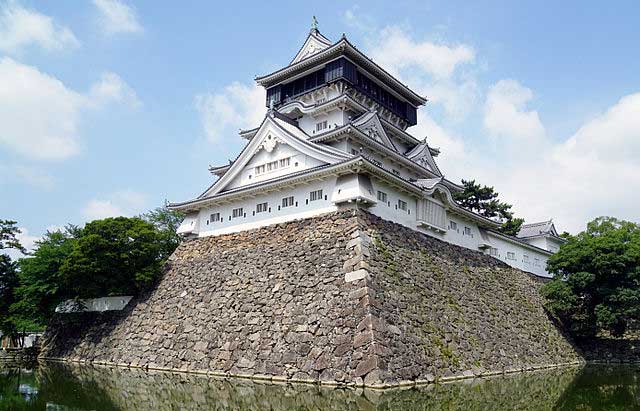
Kokura Castle is traditionally considered to have been founded by Hosokawa Tadaoki (1563–1645), although by the time the Hosokawa clan came to control these lands, the fortification had already existed since at least 1569 and was most likely built by members of the Mori clan.
-
Ikeda Castle
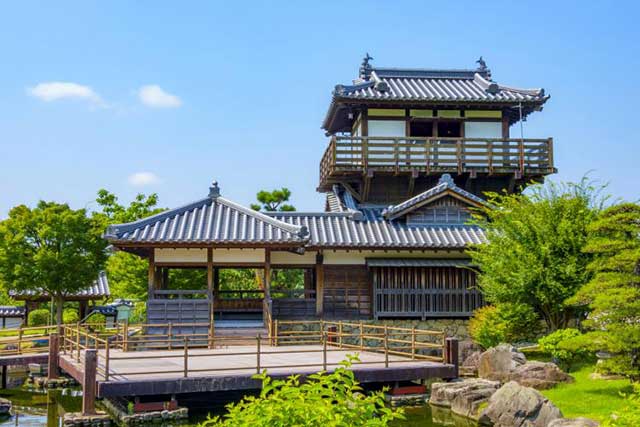
In 1334, Ikeda Noriyoshi built a small fort on this site, which over time was repeatedly expanded and rebuilt. During the Ōnin War of 1467–1477, the Ikeda clan supported the Western Coalition. As a result, Ikeda Castle was attacked and captured by the forces of the Eastern Coalition, but it was soon recaptured, allowing it to avoid serious destruction.
-
Aizu-Wakamatsu Castle
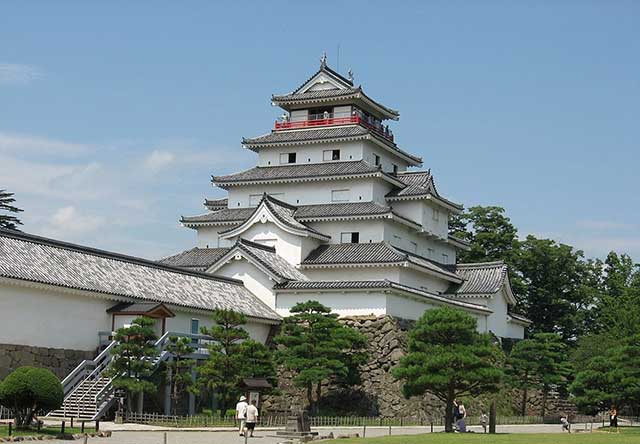
Aizu-Wakamatsu is the most powerful and at the same time the oldest castle in the Tōhoku region in the north of Honshu Island. Its history begins in the 14th century and is closely connected with the Ashina clan, whose members claimed descent from the legendary Taira family.
-
Maruoka Castle
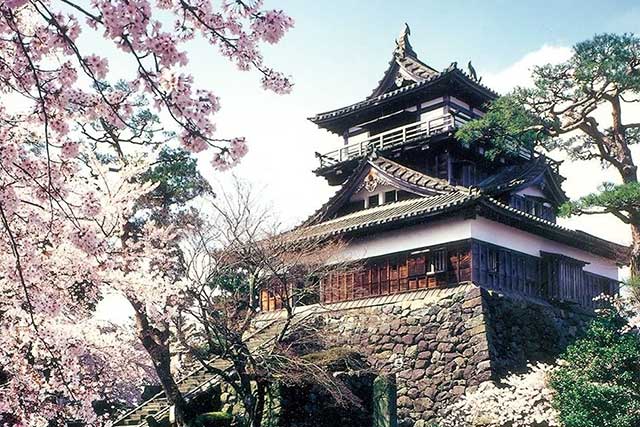
Maruoka Castle is located in the central part of the former city of Maruoka, which is now part of the city of Sakai. This area lies in the northeastern part of Fukui Prefecture. The castle was built on the bank of the Kuzuryu River, on the side opposite Fukui City, which once served as the administrative center of the former Echizen Province. Thanks to its location, Maruoka held significant strategic importance, as it controlled two major routes at once: the Hokurikudo highway leading from Kaga Province and the Mino Kaido road connecting these lands with Mino Province.
-
Marugame Castle
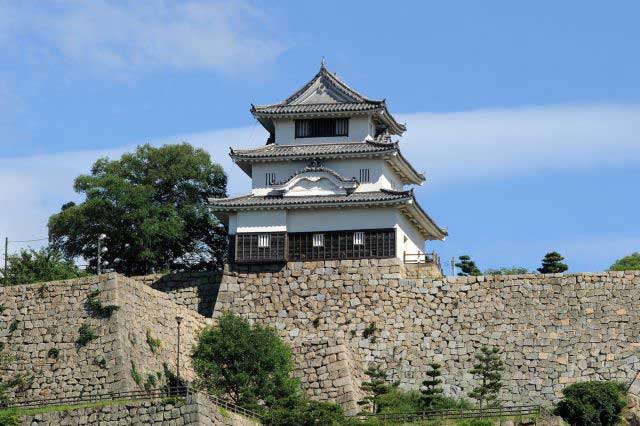
Marugame is part of the so-called “Authentic Dozen,” a group of twelve castles whose donjons have survived to the present day without major reconstructions since the Edo period.
-
Iyo Matsuyama Castle
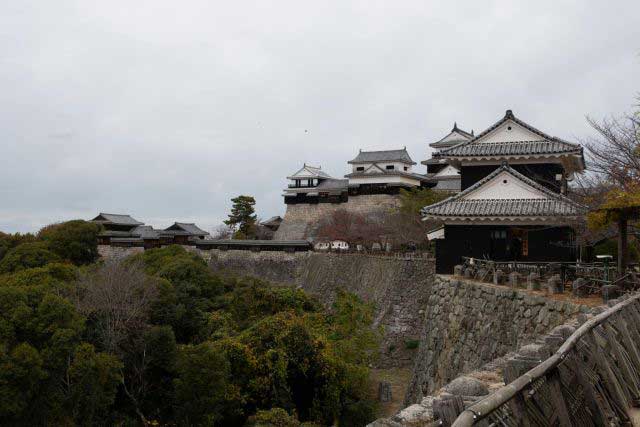
Historically, the center of Iyo Province—corresponding to today’s Ehime Prefecture on the island of Shikoku—was the city of Imabari, while the Matsuyama area was regarded as an agricultural hinterland with broad plains and low hills. During the Muromachi period, the central part of the province was governed by the Kano clan from Yuzuki Castle. With the onset of the Sengoku period, however, this clan lost its former influence and was forced to survive in the shadow of the more powerful Mori and Chōsokabe clans. After Toyotomi Hideyoshi’s forces conquered Shikoku in 1587, the northern part of Iyo Province was granted to Fukushima Masanori, one of the so-called “Seven Spears of Shizugatake.” In 1595, Masanori was transferred to Kiyosu Castle, and the lands around Matsuyama were given to another of the Seven Spears, Katō Yoshiaki, who received Masaki Castle and an income of 60,000 koku of rice.
-
Kanazawa Castle
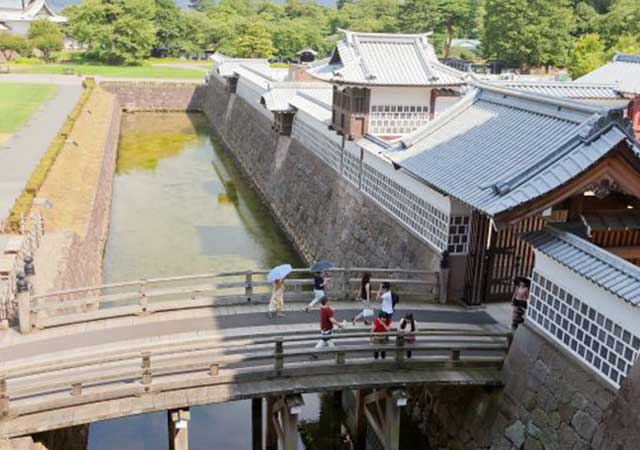
Construction of Kanazawa Castle began in 1580 on the orders of Sakuma Morimasa, a vassal of Oda Nobunaga. The castle was built on the site of the Ikko-ikki sect's Oyama Gobo temple, which is why it is sometimes called Oyama Castle. Morimasa managed to build several moats and begin construction of a castle town. However, after his defeat at the Battle of Shizugatake in 1583, he was executed, and ownership of the castle passed to Maeda Toshiie (1538–1599).
-
Nakatsu Castle
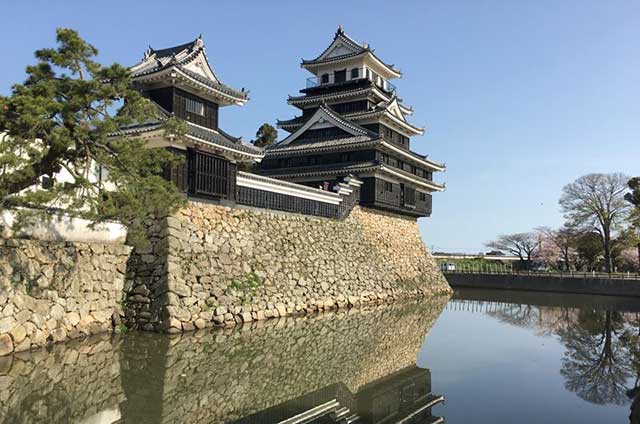
Kuroda Yoshitaka (1546–1604) was one of the closest advisors to the legendary military commander Toyotomi Hideyoshi. He took part in key military campaigns of the late 16th century, including the campaign against Shikoku in 1585 and the campaign against Kyushu in 1587. Later, during the second campaign in Korea, Yoshitaka served as chief advisor to the commander of the invasion forces, Kobayakawa Hideaki. After Hideyoshi's death, he swore allegiance to Tokugawa Ieyasu, thereby securing his influence and patronage under Japan's new leader.

